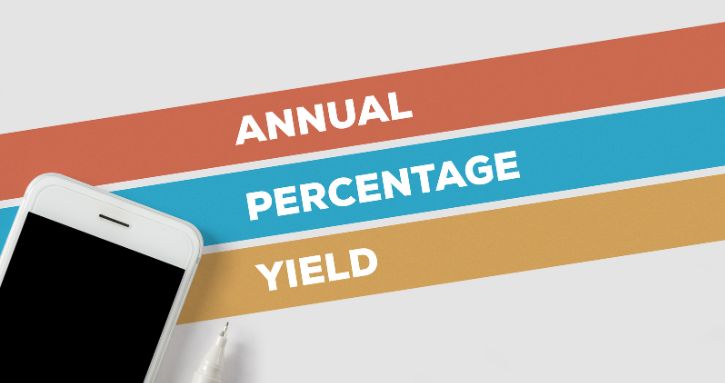APY vs APR: Which Matters Most?
In finance, where every percentage point counts, understanding the subtle yet significant differences between APY and APR can make or break your financial decisions. While these acronyms may seem like mere technicalities, they hold the key to learning the true cost of borrowing and the potential returns on your savings and investments.
Whether you’re evaluating the terms of a savings account, a credit card, or a loan, knowing how to distinguish between these metrics can be the key to optimizing your earnings while minimizing your financial spending. By developing a profound understanding of how these essential factors operate, you can ensure that your money isn’t just safe but also working intelligently for you in the long run.
What is APR (Annual Percentage Rate)?
APR is a term primarily associated with borrowing, such as loans, credit cards, and mortgages. It represents the cost of borrowing over a year and is expressed as a percentage. Lenders are required by law to disclose the APR to borrowers, making it a valuable tool for comparing different loan offers.

APR includes not only the interest rate but also any additional fees or costs associated with the loan. This makes it a more accurate representation of the true cost of borrowing. Some of the fees and costs included in APR may consist of origination fees, closing costs, and points, among others.
For example, if you’re looking at a mortgage with an APR of 4.5%, it means that, in addition to the interest rate, you’ll also be paying certain fees associated with the loan over the course of a year. Check out this APR Trends in 2023 from Investopedia to gain insights into how interest rates for loans, credit cards, and mortgages are evolving in the current financial landscape.
What is APY (Annual Percentage Yield)?
APY is a concept typically associated with savings and investment products, such as savings accounts, certificates of deposit (CDs), and certain investment accounts. It represents the amount of interest you earn or the return on your investment over a year, also expressed as a percentage.

APY takes into account compound interest, which means that you earn interest on your initial deposit and on the interest already earned. This compounding effect can significantly boost your savings over time, especially in long-term investments.
Let’s say you deposit $1,000 into a savings account with an APY of 2%. Over the course of a year, you’ll earn $20 in interest, but that interest is then added to your initial deposit. So, in the second year, you’ll earn interest on $1,020, not just on the original $1,000.
Curious about the expected savings rates for the latter part of 2023? Read Forbes’ Savings Rates Forecast for 2023. This forecast provides valuable insights into the anticipated trends in savings rates.
APY vs APR: Key Differences
When comparing Annual Percentage Rate (APR) and Annual Percentage Yield (APY), it becomes evident that these financial metrics serve distinct purposes. APR is primarily used to convey the cost associated with borrowing money, making it a critical tool when evaluating loans, credit cards, and mortgages. On the other hand, APY is specifically designed to describe the potential return on your savings and investments, making it the go-to metric when you’re looking to grow your wealth.
In terms of their components, APR encompasses not only the interest rate but also any additional fees linked to the loan, providing a comprehensive view of the true cost of borrowing. Conversely, APY takes into account the effects of compound interest on your savings or investments. This means that you’re not just looking at a simple interest rate but understanding how your money can multiply over time, a crucial distinction for those focusing on building their financial nest egg.
The calculation methods for APR and APY also differ. Computing APR is relatively straightforward as it primarily considers the interest rate and any associated fees, leading to a more linear calculation. On the other hand, APY’s calculation is slightly more intricate due to its incorporation of compound interest, which considers not just your initial deposit but also the interest you’ve already earned.
Lastly, regulation plays a significant role. Lenders are legally obligated to disclose APR to borrowers, ensuring transparency in borrowing costs. In contrast, while APY is essential for consumers looking to decide about savings and investments, it may not be as extensively regulated. As a result, it’s crucial for individuals to exercise caution and carefully compare different savings and investment products to make the most of their financial endeavors.
Choosing the Right Metric
The question often arises: which metric should you prioritize? The answer depends on your financial objective. If you’re borrowing money or comparing loan options, APR is your go-to metric for evaluating the real cost of borrowing. It ensures you’re not blindsided by hidden fees.
On the other hand, if you’re saving or investing, APY is the metric you should focus on to understand how your money will grow over time. It factors in compound interest, which can have a profound impact on the growth of your savings and investments.
In conclusion, understanding the distinction between APY and APR is essential for managing your financial affairs effectively. Whether you’re borrowing, saving, or investing, these two metrics provide valuable insights into the costs and benefits of different financial products. With this knowledge, you can decide better and align your financial goals and aspirations.
Resources:





